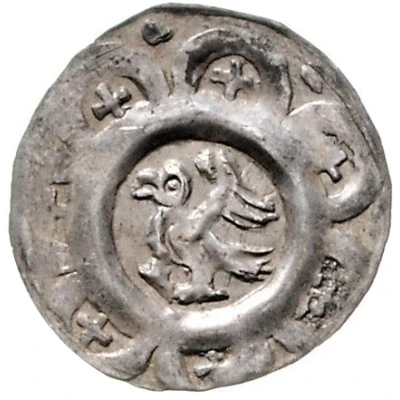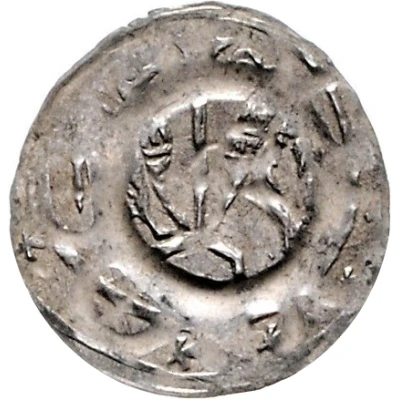Denier anonymous Eger ND
| Silver (.700) | 0.85 g | 21 mm |
| Issuer | Holy Roman Empire |
|---|---|
| King | Frederick II (1212-1250) Rudolph I (Rudolf I) (1273-1291) Adolf of Nassau (1292-1298) |
| Period | Great Interregnum (1254-1273) |
| Type | Standard circulation coin |
| Years | 1220-1300 |
| Value | 1 Denier (Pfennig) |
| Currency | Denier (843-1385) |
| Composition | Silver (.700) |
| Weight | 0.85 g |
| Diameter | 21 mm |
| Shape | Round (irregular) |
| Technique | Hammered |
| Orientation | Variable alignment ↺ |
| Demonetized | Yes |
| Updated | 2024-10-05 |
| Numista | N#91280 |
|---|---|
| Rarity index | 100% |
Comment
Reference: Castelin.33Interesting fact
One interesting fact about this coin is that it was minted during a time of great economic and political change in the Holy Roman Empire. The Denier anonymous (Eger) coin was introduced as a new standardized currency during the reign of Emperor Frederick II, who was trying to centralize power and reform the empire's economy. This coin was made of silver and weighed 0.85 grams, which was a significant departure from the previous irregularly minted coins that were made of various metals and had varying weights. The introduction of this coin helped to establish a more stable and reliable currency system in the empire, which in turn facilitated trade and commerce.

